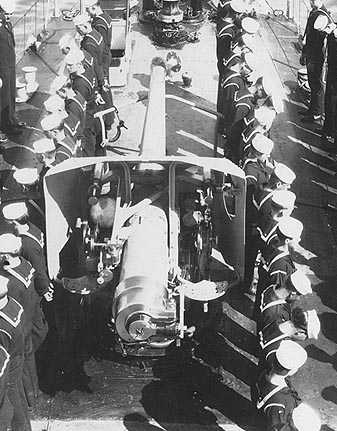|
Many individual Mark 9 guns were supplied to the British during World War II as part of Lend-Lease. In addition, these guns armed numerous ex-USN warships transferred to Britain, including destroyers, submarines, escort carriers and DEMS. In total 424 guns were transferred to the UK, mainly Mark 9. The USN also sent 60 guns for Dutch DEMS and 21 guns for Norwegian vessels. By the end of the war, most Lend-Lease destroyers were reduced to only one 4"/50 (10.2 cm) gun and four escort carriers were rearmed with British 4"/45 (10.2 cm) Mark V guns. In British service these USN guns had a poor reputation as they were prone to coppering and steel choke problems. Vickers was asked to provide special liners designed to work with USN ammunition for these guns and for the Mark XVI*, but it was found that this raised the barrel pressure of the latter gun to unacceptable levels. Mark 7 was constructed of A tube, jacket, hoop locking ring and liner with a screw breech. Mark 8 was a simplified design consisting of a gun tube and jacket. Mark 9 was a light weight design for destroyers and submarines and was originally built with A tube and full length jacket with a muzzle swell and used a Smith-Asbury type side swing breech mechanism with a Welin block. Later mods were of monobloc construction and used chromium plating to increase life. Mark 10 had a vertically sliding breech block and was intended for anti-aircraft use, but this Mark does not appear to have been put into service. The data that follows is specifically for the Mark 9 except where otherwise noted. |

Bow gun on USS Farragut DD-300 about 1925
|
| .
|